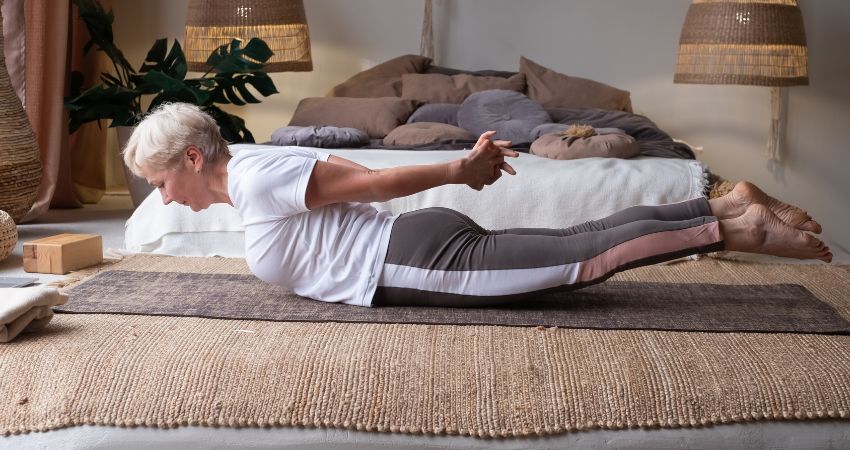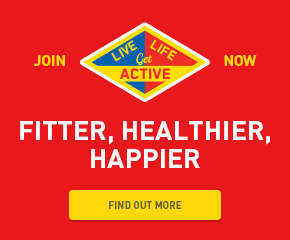The Most Effective Workouts for Your Age Group
Finding the right workout routine can be challenging, especially as we age. Our bodies change, our fitness goals evolve, and what worked in our 20s might not be as effective in our 40s or beyond. Tailoring workouts to suit specific age groups can boost results, improve your health, and minimise your risk of injury.
Workouts for Your 30s
High-Intensity Interval Training (HIIT)
Your risk for cardiovascular disease increases and your metabolism begins to decrease as you hit your 30s. That’s why fat-burning, stamina-boosting workouts that are good for heart health will become a life-saver in your exercise routine.
HIIT workouts are great for busy schedules and boosting cardio fitness. HIIT involves short bursts of intense exercise, followed by brief rest periods. These workouts are known for boosting metabolism and aiding weight loss.
Strength Training
After we turn 30, we lose 3-8% of our muscle mass per decade. Women are especially prone to muscle loss as they age. Incorporating strength training into your fitness routine helps prevent muscle mass loss. Strength training is also known to drastically increase metabolic rate and decrease body fat.
Strength training can be done with or without equipment. You can also add strength training to other workouts by incorporating weights and resistance bands.
Daily Stretches
Flexibility decreases in your 30s as your muscles and connective tissues tend to shorten. You can combat this by adding some simple stretches to your morning routine or before you start a workout.
Incorporate Rest Days
It’s common for active people to push themselves, especially when you’re young. As you enter your 30s, however, you may notice yourself feeling more sore after workouts. The older you are, the more important it becomes to give your body enough time to recover between exercises so that you don’t overwork yourself or inflict long term damage.
Workouts for Your 40s
Yoga and Pilates
In your 40s, maintaining a diverse exercise routine that features both aerobic and strength training is the best way to boost the benefits of your workouts. If you’re not big on lifting weights, yoga and Pilates are a great alternative for strength training.
Yoga and pilates build core strength which helps to improve posture and protect against back pain, which often starts up during this decade.
As flexibility declines with age, yoga and Pilates become invaluable for improving mobility and reducing stiffness. These practices also promote relaxation and stress relief, which are essential during this frequently busy and chaotic period of life.
Low-Impact Cardio
Protect joints and reduce the risk of injury by opting for low-impact cardio activities such as swimming, cycling, or brisk walking. These exercises improve cardiovascular health without placing excessive stress on the body.
Boxing
Boxing’s benefits are proven to battle many of the major health complications we experience during our 40s. Boxing exercises lower blood pressure, aid weight loss, improve heart health, and boost muscle mass. It’s a great way to challenge your mind and body.
You don’t need a punching bag or gloves to practice boxing, either. Check out our on-demand library for equipment-free boxing workouts you can do at home.
Workouts for Your 50s
Tai Chi
By this age, our joints are known to be more fragile, which is why you should opt for activities that help to build joint strength while putting little strain on the body. Tai Chi offers a low-impact exercise option that promotes joint health, balance, coordination, and mental relaxation. Its slow, deliberate movements are particularly beneficial for older adults to maintain mobility and prevent falls.
Cross-Training
Cross-training or ‘curcuit training’ routines combine different strength and cardio exercises. This is great for when you’re in your 50s, as workouts that focus on diverse movements rather than repetition reduce your risk of strain and injury. These workouts also enhance stamina for boosted energy levels, increase metabolism, and improves overall fitness levels.
Walking
Walking remains one of the simplest yet most effective forms of exercise for older adults. It improves cardiovascular health, maintains joint function, and promotes mental wellbeing. Aim for at least 30 minutes of brisk walking most days of the week.
Workouts for 60s and Beyond
The best way to prevent health issues from appearing late in life is by consistently investing time into staying active throughout earlier decades. However, if you’re starting to feel the negative effects of ageing on your body, here are some great workouts to get you back to feeling like the person you were a decade ago:
Chair Yoga
Regular exercise in your 60s is more important than ever, as it helps you to stay in charge of your life and be independent for as long as possible. It’s also been proven to keep your mind sharp and your mood lifted.
Chair yoga modifies traditional yoga poses to be performed while seated or using a chair for support. It enhances flexibility, strength, and relaxation, making it suitable for those with limited mobility or balance issues.
Resistance Band Exercises
Resistance bands provide gentle yet effective resistance for strength training exercises. They are portable, versatile, and safe for seniors to use at home or in a group fitness setting. Focus on exercises that target major muscle groups while emphasising proper form and control for maximum payoff.
Balance Exercises
Maintaining balance as you get older becomes more and more difficult, leaving you at a greater risk of falls and injury. Try to focus on exercises that are designed to help develop your balance. Yoga and Tai Chi are always great options, or you could try some simple, balance-boosting movements you can repeat daily:
Single Leg Stance
- Stand tall with your feet hip-width apart.
- Shift your weight onto one foot.
- Slowly lift the other foot off the ground, either bending the knee and keeping it lifted or extending it slightly forward.
- Engage your core muscles to maintain balance.
- Hold the position for 20-30 seconds, then switch legs.
- Repeat for 2-3 sets on each leg.
Tightrope Walk
- Imagine a straight line on the ground or use a real balance beam if available.
- Stand with your feet together at one end of the line.
- Lift your arms out to the sides to help with balance.
- Take slow, deliberate steps along the line, placing one foot directly in front of the other.
- Keep your gaze fixed ahead to help with balance.
- Continue walking the length of the line and back again.
- Aim for 2-3 rounds of walking the line.
One-Legged Clock Reach:
- Stand on one leg with your knee slightly bent.
- Imagine yourself at the center of a clock face.
- Reach one foot forward to 12 o’clock, tapping the ground lightly with your toes, then return to center.
- Repeat the reach to 3 o’clock, 6 o’clock, and 9 o’clock, always returning to center between each reach.
- Complete 5-10 reaches in each direction on one leg, then switch legs and repeat.
Conclusion
Regardless of age, staying active is crucial for overall health and well-being. By choosing workouts tailored to your specific age group, you can optimize fitness levels, prevent injuries, and enjoy a healthier, happier life as you age. Remember to consult with a healthcare professional before starting any new exercise program, especially if you have pre-existing health conditions or concerns.








